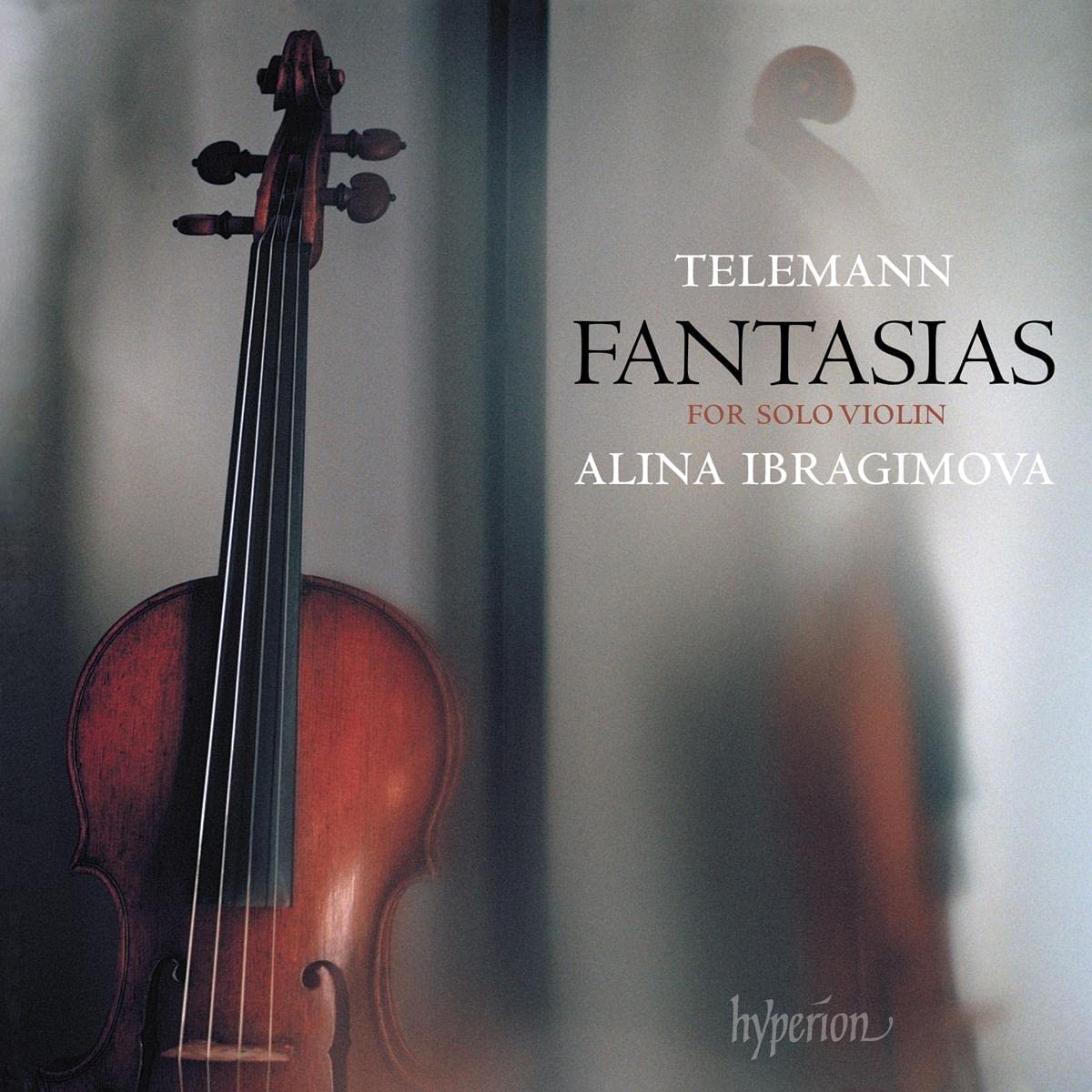Alina Ibragimova
65:56
hyperion CDA 68384
Above and beyond his regular duties as a vast provider of music for all occasions, Telemann also catered for the growing amateur and domestic demands for appropriately crafted “training aids” in both sung and instrumental areas within his “Selbstverlag” (self-publishing house). Excluding the Frankfurt publications, the Hamburg activities took off with the Harmonische Gottesdienst 1725-6, a full year’s worth of chamber cantatas for church or domestic use, or indeed training aids! The provision of music to all was a keen aim which was fulfilled across the board. It was during the period of 1732-1735 that we find the four sets of Fantasias: Flute, Harpsichord (Three Dozen) Violin and Gamba, each side of the highly successful Musique de Table publication in 1733… and the Sing- Spiel- und General-Bass Übungen 1733-4. The latter set good “training aids” to improve performance and proficiency.
All of these attributes are found in the Fantasias; within those for solo violin we find a clever combination of older framed pieces and more forward-looking galant textures, mixed with some rusticity. Neat, trick polyphonic devices and echos, suggesting a duo-effect to one’s ear. Not everyone pulls this off as they transit the various modes and styles. It is all a question of phrasing and correct articulation of the implied flow of musical ideas. As I stated in a previous review of these same works (Thomas Cotik) each violinist brings their own stamp to these pieces. Alina Ibragimova brings her style to bear within the six retro-looking and six more galant pieces on what may be an Amati violin which has both a deep sonority and crystalline top register.
The total timing gives a slight guide to tempi used; Ibragmiva’s 65:56 is slower than the benchmark Fabio Biondi at 62:30, but faster than Andrew Manze at 70:44, and Rachel Podger at 75:20. Strangely, I wasn’t won over by the opening phrase nor the (over-)use of diminuendo, which to me clashed with some overemphatic gestures. Some of the subtle faux-duo lines were lost in a straightforward chain of notes, which were most dextrous in delivery yet lost some improvisatory magic. The F-minor work seemed to slip from a normally melancholic feel to rather mournful, while the D-major had a much freer flow and familiar exposition of some galant-styled tones. Here it must be said the CD booklet notes by Joseph Fort are pertinent and informative, aiding the listener’s transit.
Comparing this version to a whole “string” of violinists tackling these works (pun intended!), I would probably opt for the CRD Maya Magub or the recent Orchid Classics with Iryna Gintova, yet everyone ought to have the Biondi (Glossa), possibly the Dubeau (Analekta, on modern violin), most probably have either the Manze or Podger, or maybe the Cotik (Centaur, also modern violin) for his brash and showy yet cogent version. Many others will bring their stamp and phrasing in these engaging works with stylistic signposts and faux-double violin effects, plus typical Telemann rustic elements… in short, the violin fantasias are a neatly crafted assemblage to tease player and listener!
David Bellinger
